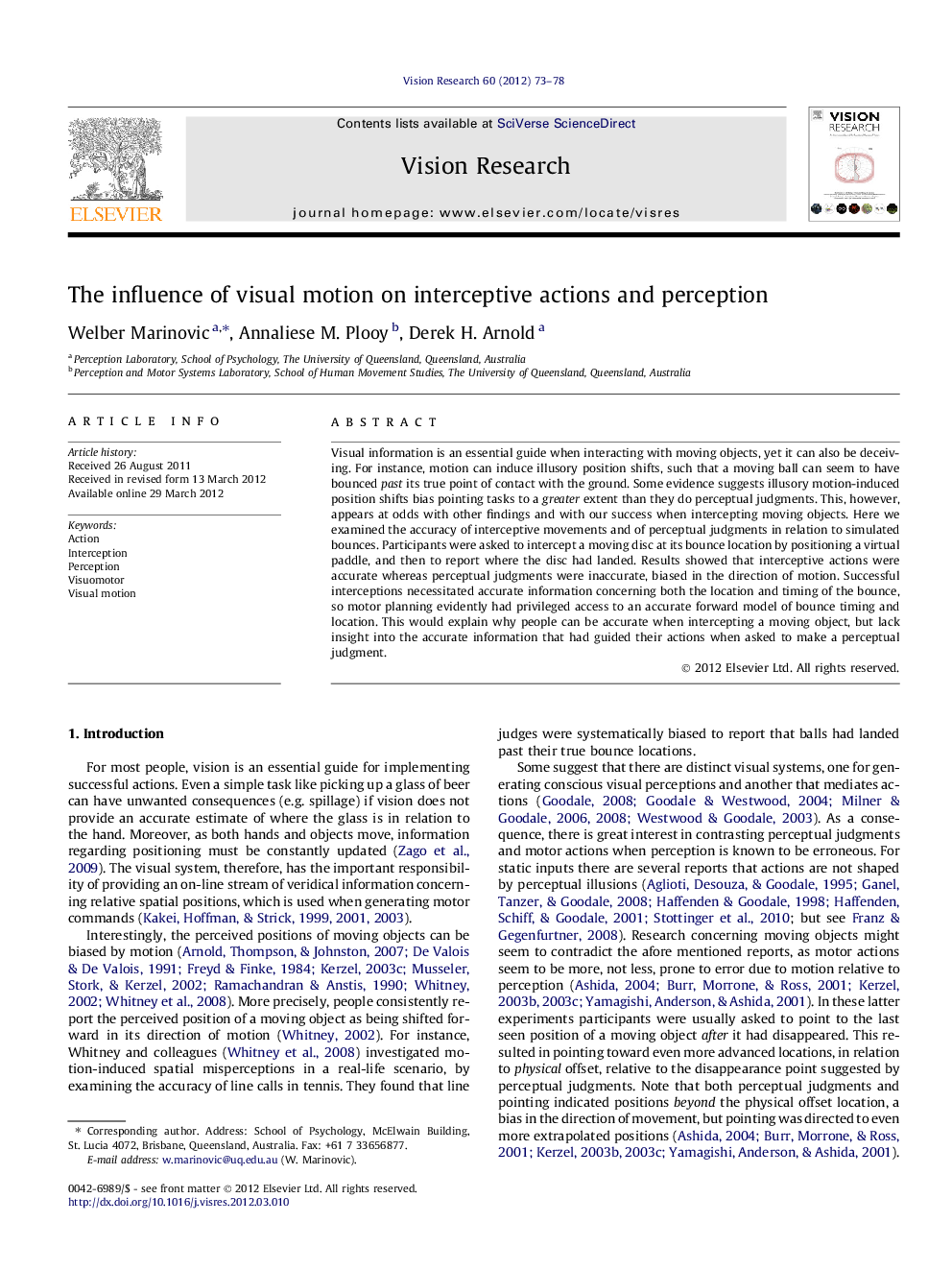| Article ID | Journal | Published Year | Pages | File Type |
|---|---|---|---|---|
| 4033963 | Vision Research | 2012 | 6 Pages |
Visual information is an essential guide when interacting with moving objects, yet it can also be deceiving. For instance, motion can induce illusory position shifts, such that a moving ball can seem to have bounced past its true point of contact with the ground. Some evidence suggests illusory motion-induced position shifts bias pointing tasks to a greater extent than they do perceptual judgments. This, however, appears at odds with other findings and with our success when intercepting moving objects. Here we examined the accuracy of interceptive movements and of perceptual judgments in relation to simulated bounces. Participants were asked to intercept a moving disc at its bounce location by positioning a virtual paddle, and then to report where the disc had landed. Results showed that interceptive actions were accurate whereas perceptual judgments were inaccurate, biased in the direction of motion. Successful interceptions necessitated accurate information concerning both the location and timing of the bounce, so motor planning evidently had privileged access to an accurate forward model of bounce timing and location. This would explain why people can be accurate when intercepting a moving object, but lack insight into the accurate information that had guided their actions when asked to make a perceptual judgment.
► We investigated the impact of visual motion on perception and action. ► Perception was systematically biased in the direction of motion. ► Interceptive actions were accurate. ► Perception and action are based on qualitatively different sources of information.
